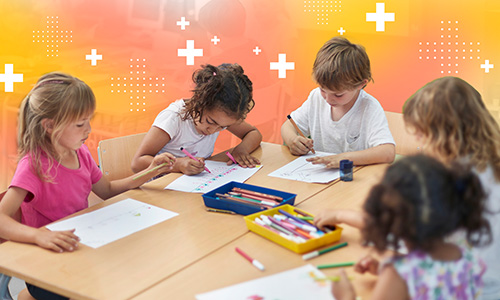
When students, educators, and administrators return to school after the COVID-19 closures, classrooms will be a changed landscape, one likely marked by larger equity gaps, substantial learning loss for many students, and continued economic turmoil for our most marginalized families.
“Given NWEA’s depth of research and our partnerships with other mission-driven organizations, we’re in a unique position to offer valuable insights to the education community as we navigate through this crisis,” says CEO Chris Minnich. “Together, we can mitigate the impact on kids—especially for those most vulnerable in our population—and continue our efforts to narrow opportunity gaps.”
While it is difficult to speculate on what missing months of school may mean for student achievement, research on seasonal learning and summer learning loss can offer some insights that can help educators, policymakers, and families understand, plan for, and address some potential impacts of this extended pause in classroom instruction when students return to school.
Possible outcomes of coronavirus school closures
NWEA has released projections that current school closures could result in substantially lower achievement levels for students. The forecasts used a national sample of over five million students in grades 3–8 who took MAP® Growth™ assessments to estimate potential impacts of COVID-19 related school closures.
Together, we can mitigate the impact on kids—especially for those most vulnerable in our population—and continue our efforts to narrow opportunity gaps.”
My colleague Megan Kuhfeld and I compared academic achievement trajectories during a typical school year for grades 3–8 where no disruption to learning took place to two scenarios that could result from school closures: a COVID-19 slide, in which students show patterns of learning loss typical of summers throughout the extended closures, and a COVID-19 slowdown, in which students maintain the same level of academic achievement they had when schools were closed (modeled for simplicity as beginning March 15) until schools reopen.
Preliminary estimates suggest impacts may be larger in math than in reading and that students may return in fall 2020 with less than 50% of typical learning gains and, in some grades, nearly a full year behind what we would expect in this subject in normal conditions.


We provide caution around these projections. While the COVID-19 school closures have some characteristics in common with a summer break, many school systems and families across the country are implementing various online curriculum, instruction, and progress monitoring resources to offset the disruption. However, trauma, joblessness, and an increase in the number of families facing food insecurity, homelessness, domestic violence, and even the illness or death of a loved one could make academic projections even bleaker for our most vulnerable populations.
What we must come together to do
Like epidemiologists who have public health projections, our academic forecasts present the education community with a moral imperative to ask: How do we support educators and families during and after the COVID-19 crisis? What can we do to mitigate these academic projections? To start:
 Policymakers and the education community should further their work to provide support, especially in math, to students while school is disrupted. Support includes making sure all students and families have access to appropriate, engaging math and reading materials, instruction, and support during coronavirus closures. This will require addressing the most pressing challenges first, like closing the digital divide by providing increased access to the internet and technology. Then, school leaders and educators can address more nuanced instructional challenges like differentiation, accessibility, and English language learner needs.
Policymakers and the education community should further their work to provide support, especially in math, to students while school is disrupted. Support includes making sure all students and families have access to appropriate, engaging math and reading materials, instruction, and support during coronavirus closures. This will require addressing the most pressing challenges first, like closing the digital divide by providing increased access to the internet and technology. Then, school leaders and educators can address more nuanced instructional challenges like differentiation, accessibility, and English language learner needs.- Educators will need data now more than ever to guide curriculum and instruction to support students. Accurate, valid, and reliable data can provide valuable diagnostic information in times of disruption and uncertainty, especially to determine where to focus resources and how best to help students academically.
- Researchers, policymakers, and schools should work together to understand potential policies and practices for recovery. Summer slide data gives a starting point for the analysis of the impact of school closures on student learning, but the complete answer needs to be found in research over time in collaboration with schools to identify their specific circumstances. This will enable the education community to identify patterns of loss that can be generalized to the larger population of schools throughout the United States and define the potential policies for our schools’ recovery that can be expanded throughout the nation in a timely manner.
Learn more
Watch our on-demand webinar, “COVID-19 closures and learning loss,” and the video below to learn more.







